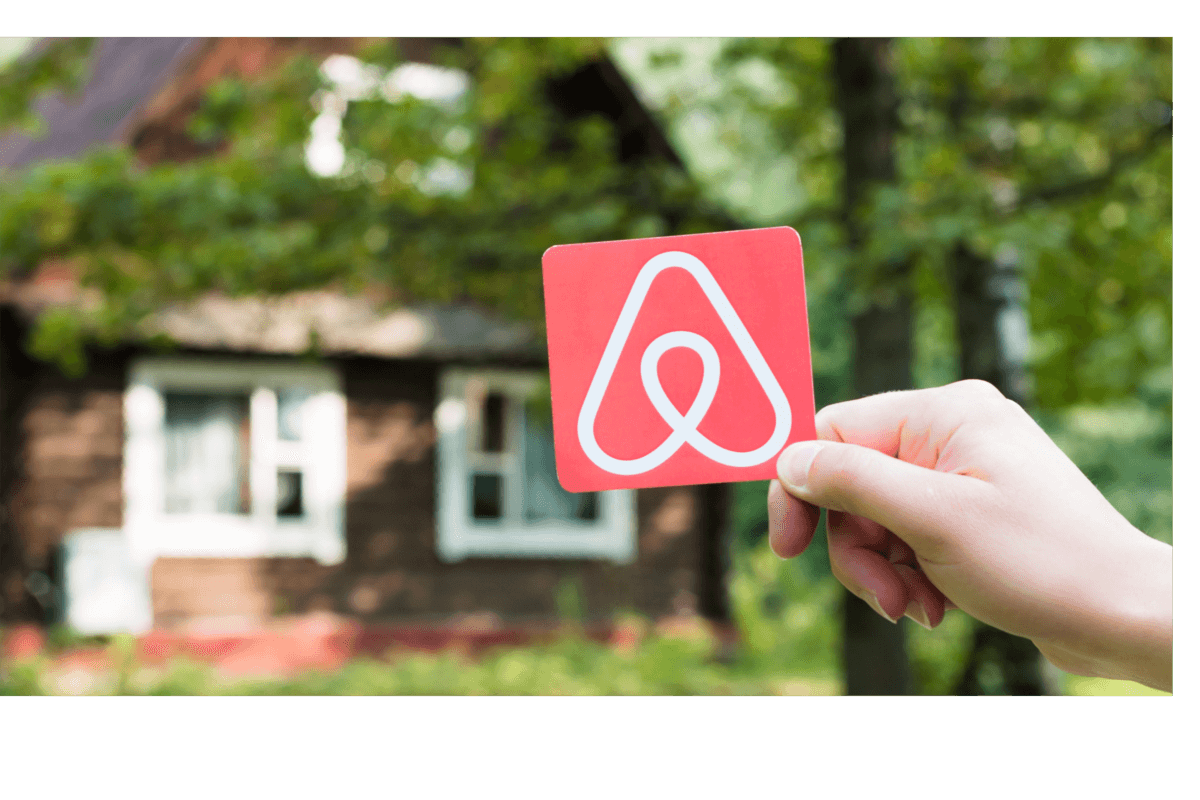
How to Start an Airbnb Business in the Philippines: Step-by-Step Guide
The Philippines has become one of Southeast Asia’s hottest markets for short-term rentals, with Airbnb leading the charge. From city apartments in Manila to cozy cabins in Baguio, travelers are seeking local stays that feel authentic yet convenient.
With potential annual earnings of around ₱387,878 per listing¹, the rewards can be substantial. For Filipinos, this trend presents a real opportunity to earn consistent income if it’s treated like a proper business.
In this guide, we’ll walk you through how to start an Airbnb business in the Philippines, covering permits, listing strategies, and creating a memorable guest experience. You’ll also see how a Wise Business account can make running your Airbnb smoother by letting you collect payments from overseas guests like a local, in multiple currencies, and with lower conversion fees.
By the end, you’ll have a clear roadmap for launching your own Airbnb venture.
| Table of contents |
|---|
Planning for your Airbnb in the Philippines
Airbnb hosting looks pretty simple from the outside, but success starts with careful planning. Your outlook has to be that of a small business owner, not just someone renting out a spare room. This mindset will help you make smarter decisions from day one.
That said, here are a few things to weigh before listing your property:
Goals and time commitment
You want to be clear what you’re in it for. Are you looking for a side hustle, or do you want to build a full-time business? How much time can you realistically dedicate to managing bookings, cleaning, and guest support? Deciding these before you launch out will help you set measurable targets and work decisively towards them.
Location demand
Airbnb demand varies widely across the Philippines. Metro Manila alone has 24,745 listings with a 51% occupancy rate at ₱2,193 daily rates².
Makati has the highest concentration at 4,594 active listings³. Meanwhile, emerging destinations like Siargao are gaining traction thanks to digital nomads and surfers.
Study your target location’s tourism patterns, seasonal trends, and competitor pricing so you can position your property effectively.
Startup costs
Outfitting a property for hosting requires upfront investment. For a one-bedroom unit, expect startup costs of around ₱81,385⁴, with most expenses going to furnishings. Treat these as business costs—you’ll want to recover them through consistent bookings.
Financial outlook
Run the numbers before you launch. Factor in nightly rate, potential occupancy, and recurring costs like utilities and cleaning. Compare projected income against average earnings in your area.
A typical listing in the Philippines generates ₱387,878 per year¹, but actual results depend on location, demand, and guest reviews.
Step-by-step guide to becoming an Airbnb host
If you’re wondering how to start an Airbnb business in the Philippines, here are five practical steps. They take you from setup and legal checks to listing, hosting, and getting paid.
Step 1: Sign up and prepare legal requirements
The first step to becoming an Airbnb host in the Philippines is setting up your account and completing identity verification, usually with a government-issued ID and selfie. Take time to complete your host profile thoroughly, as guests often review host credentials before booking. Include a professional photo and write a compelling bio that highlights your local knowledge and commitment to guest satisfaction.
Once that’s done, focus on the legal requirements of your Local Government Unit (LGU). Most cities or municipalities will expect you to secure a barangay clearance and a mayor’s permit before you can list a property. Depending on the property, you may also need occupancy, sanitary, or fire safety permits⁵.
In the Philippines, the Department of Tourism also requires a valid business permit for accommodation accreditation⁶.
Because these processes can take weeks, start early to avoid delays in launching your listing.
💡You might want to check out our guides to
Step 2: Craft a compelling listing
Once you’ve taken care of the legal groundwork, your next move is to focus on how your property shows up online. Guests often make decisions based on first impressions, so your listing has to be both accurate and engaging.
Start by sharing clear details about the property itself—its location, the type of space you’re offering, and how many people it can accommodate. Highlight the features that make your place unique—whether it’s the view from the balcony, reliable wifi, or proximity to a popular spot.
Visuals strongly influence booking decisions. Consider investing in a professional photographer to capture your property at its best. While you’re at it, ensure your photos depict that your home is clean, clutter-free, and well-lit. Capturing your space from multiple angles can help with this. You have just one opportunity to make that first impression; make it count.
Step 3: Publish and manage your listing
With your listing ready, it’s time to make it live and start welcoming guests. At this point, you want to think carefully about your pricing strategy. Competitive rates plus a small discount in your first few bookings can build momentum and secure those all-important early reviews.
You can use tools like Airbnb’s Smart Pricing to automatically adjust nightly rates based on demand in your area⁷.
Be transparent about all fees, including cleaning or extra guest charges, to avoid unpleasant surprises.
Once your listing is up, customise your settings so they reflect your hosting style. Consider your target guest when setting minimum stay requirements, instant booking policies, and cancellation terms. Flexible policies often attract more bookings, but stricter requirements can filter for more serious guests.
Response time is key. It impacts your search ranking and booking success. Airbnb expects hosts to respond to inquiries and booking requests within 24 hours. Turn on mobile notifications to avoid delays. Be cautious about cancellations, since penalties and negative reviews hurt your reputation.
Finally, state your house rules clearly, but make sure they still feel welcoming. Cover essential points like smoking policies, pet restrictions, quiet hours, and check-in procedures.
Step 4: Prepare your property and host your first guests
Once your listing is live, it’s time to make sure the property itself delivers on the promise you’ve presented online. Guests expect a clean, functional, and welcoming space. Also, test appliances, check the Wi-Fi strength, and stock essentials like linens, towels, and toiletries so that guests feel at home from the moment they arrive.
A local guidebook with restaurant tips, transport advice, or hidden gems can also make a big impression. Professional cleaning services are worth considering, especially if you want to keep your property in top shape and want those consistent five-star reviews.
Are there any thoughtful extras you feel could make the experience more memorable—snacks, coffee, or personalized notes? Go for it. These details help your listing stand out and encourage repeat bookings.
Step 5: Manage your payout and finances
Airbnb typically releases funds within 24 hours of check-in. In the Philippines, you can receive payouts via bank transfer, Payoneer, or PayPal. If you opt for USD payouts, be aware that your bank may add conversion fees.
Be sure you’re tracking every inflow so you can plan properly, measure the profitability of your Airbnb venture, and make changes where necessary. Another perk of keeping detailed financial records is that you’re able to deduct them later on when paying your taxes. Expenses like utilities, supplies, and even cleaning services are often tax-deductible, so they reduce your overall tax liability.
Wise Business to manage multiple currencies from Airbnb properties


| 💡If you're a business in the Philippines trying to go global, you've probably hit a wall of confusing foreign exchange fees when collecting payments from international customers. Wise Business helps you cut through all that complexity—be it a local bank transfer or a wire transfer. By simplifying how you receive payments, you're free to pursue what matters—growing a local brand with global sights. |
|---|
- Obtain account details to receive payments in USD, EUR, GBP, SGD, HKD and more for a one-time fee of 1,400 PHP.
- Simply share your account details with customers or add them to invoices.
- Zero fees when you get paid via ACH, FAST, InstaPay/PESONet, & other local transfers.
- Full fee transparency when clients pay you via Wire / SWIFT.
- Hold, send, and convert money at the mid-market rate in one account.
- Accept payments from customers and payment service providers (PSPs) like Stripe and Amazon.
➡️Get started with Wise Business today
Building a successful and profitable Airbnb business
Building an Airbnb business isn’t a one-time effort. It’s an ongoing process. The more you put into planning, service, and guest satisfaction, the more sustainable your earnings will be. Here are some things to always keep at the back of your mind:
- Prioritize service excellence. Happy guests leave five-star reviews, and consistent five-star ratings boost your visibility and help you qualify for Superhost status.
- Think beyond Airbnb. Listing your property on other platforms, such as Vrbo or Booking.com, can increase your visibility and attract a wider range of travelers. Of course, multi-platform listing requires careful calendar management to avoid double bookings. However, the increased exposure often justifies the additional effort.
- Streamline payments. For many international guests, seamless payments are just as important as Wi-Fi or fresh linens. With Wise Business, you can receive, hold, convert multiple currencies, and send payments all in one place, making it easier to keep your business global-ready without hidden fees.
- Look out for opportunities. Not many people know this, but you can start an Airbnb business without owning property. You can do so by becoming a co-host, managing listings for other owners, or subleasing with the landlord’s permission. While you’ll still need permits and agreements in place, this can be a low-cost way to start an Airbnb business without heavy upfront investment.
Sources
- Ultimate guide to start Airbnb in the Philippines — Airbtics
- Metro Manila listing volume and occupancy rates — Airbtics
- Makati listing volume — Airbtics
- Ultimate guide to start Airbnb in the Philippines — Airbtics
- Local Government Unit (LGU) Registration for Enterprises in the Philippines — InCorp Philippines
- Department of Tourism accreditation requirements — DOT Philippines
- Airbnb Smart Pricing tool overview — Airbnb Help Center
Sources checked on 26 September 2025
*Please see terms of use and product availability for your region or visit Wise fees and pricing for the most up to date pricing and fee information.
This publication is provided for general information purposes and does not constitute legal, tax or other professional advice from Wise Payments Limited or its subsidiaries and its affiliates, and it is not intended as a substitute for obtaining advice from a financial advisor or any other professional.
We make no representations, warranties or guarantees, whether expressed or implied, that the content in the publication is accurate, complete or up to date.
